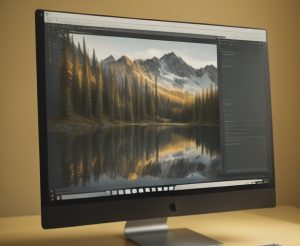
Choosing a monitor is an important decision that can have a significant impact on your comfort while using a computer. The modern market offers many models with different characteristics, and it’s not always easy to determine which one is best suited for your needs. It’s important to understand that every characteristic – from screen size to refresh rate – has its own impact on the overall experience. In this article, we’ll look at the main factors to consider when choosing a monitor. First of all, pay attention to the screen size. Monitors typically have a diagonal of 21 to 32 inches, but there are larger options. For office work or programming, models with a diagonal of 24-27 inches are optimal, as they provide enough space to open several windows at once. If you plan to use the monitor for gaming or working with graphics, then you should pay attention to models with a diagonal of 27 inches or more. A large screen provides better immersion in the gameplay or allows you to work more accurately with details in graphics programs. However, keep in mind that a screen that is too large can also be uncomfortable for prolonged use, especially if you sit too close to it. The next important factor is the resolution. It determines the clarity and detail of the image on the screen. The most common resolution is Full HD (1920×1080), which is good for most office tasks and basic gaming. Again, if you work with graphics or video, or perhaps you’re looking for a monitor for more demanding games, it’s still better to choose a Quad HD (2560×1440) or 4K (3840×2160) model. Higher resolution will give you much better detail, but to work comfortably on such a monitor, you also need to have a powerful graphics card that can process images at high settings. Refresh rate is another key indicator, especially for gamers. It is measured in hertz and shows how many times per second the image on the screen is refreshed. For office work, a frequency of 60-75 Hz is sufficient. However, if you’re looking for a monitor for gaming, we recommend considering models with a frequency of 120 Hz or more. You will get a smoother image, especially in dynamic games. It should be emphasized that professional gamers often choose monitors with a frequency of 144 Hz or higher to have the best response to fast movements. The type of matrix also significantly affects the image quality and viewing angles. The most common are TN, IPS, and VA matrices. TN matrices have the fastest response time, so they are often used in gaming monitors, but they don’t offer good colors or wide viewing angles. IPS-matrices provide more accurate color reproduction and wider viewing angles – ideal for working with graphics or watching movies. And VA matrices combine the advantages of TN and IPS, actually providing good colors, but may have a slightly longer response time. Response time is a very important indicator for gamers. It shows how quickly the pixels of the monitor change color.
If you plan to use the monitor for gaming, you should choose models with a response time of no more than 1-4 ms, as this avoids blurring the image during fast movements. Everything seems to be clear here. For example, for normal work or just watching movies, a response time of 5-10 ms is quite enough. In addition to all the main technical characteristics, pay attention to the aspect ratio of the monitor. The most common format is 16:9, which is suitable for most tasks, but for multitasking or gaming, you can also consider widescreen models with a 21:9 ratio. You will get a much larger workspace. And in conclusion, don’t forget about additional features such as built-in speakers, height and tilt adjustment, USB, etc. In general, all this choice depends on your needs and budget. If you need a monitor for office work, it will be enough to choose a simple model with Full HD resolution and a refresh rate of 60-75 Hz. For gaming, it is better to pay attention to monitors with a higher refresh rate. And for professional work with graphics, choose a model with an IPS matrix and high resolution, such as Quad HD or 4K.

